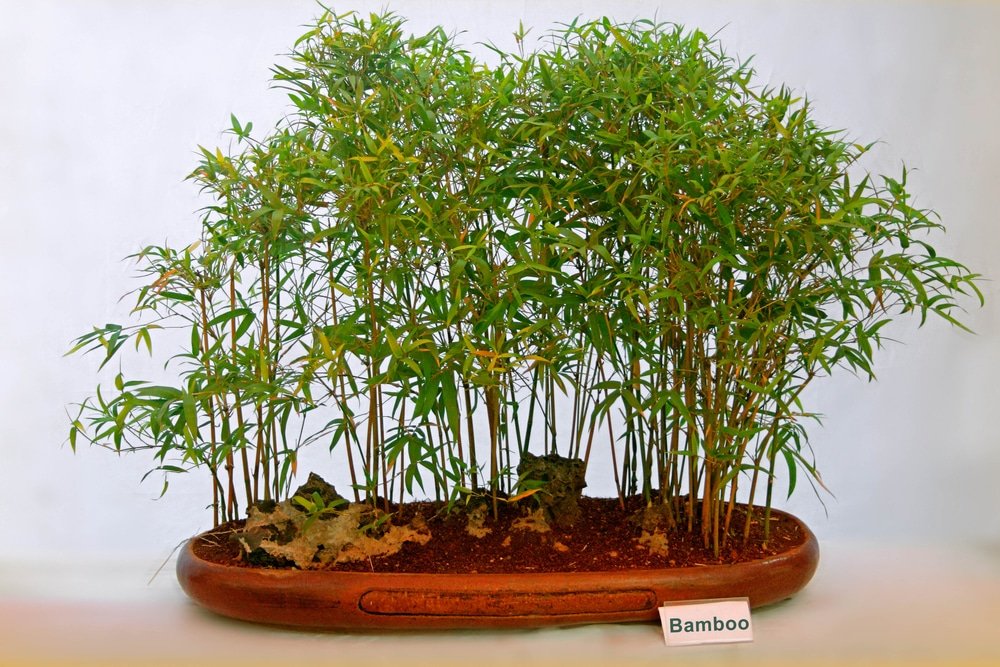
Bamboo is a truly remarkable plant. While it’s often mistaken for wood, bamboo is actually a type of tree-like grass that’s resilient, fast-growing, and incredibly versatile. It’s not just beautiful, but also a great material used across various industries. In this guide, we’ll dive into the different types of bamboo plants, how to grow and care for them, and where you can find them for sale.
Bamboo Plant Varieties
Bamboo comes in many shapes and sizes, and there are both indoor and outdoor varieties to choose from. Broadly speaking, bamboo falls into two categories: running bamboo and clumping bamboo.
- Running Bamboo: This type is known for being aggressive and fast-spreading. It grows by sending out rhizomes (underground stems) that shoot off horizontally, allowing it to spread quickly. While it’s perfect for creating dense green spaces outdoors, it’s best avoided indoors unless you can control its growth.
- Clumping Bamboo: Unlike running bamboo, clumping bamboo grows in a more controlled manner, making it ideal for indoor environments. It’s much easier to manage and is often used in home decor and landscaping.
For growing bamboo indoors, the clumping bamboo is the way to go, as it doesn’t spread aggressively like its running counterpart.
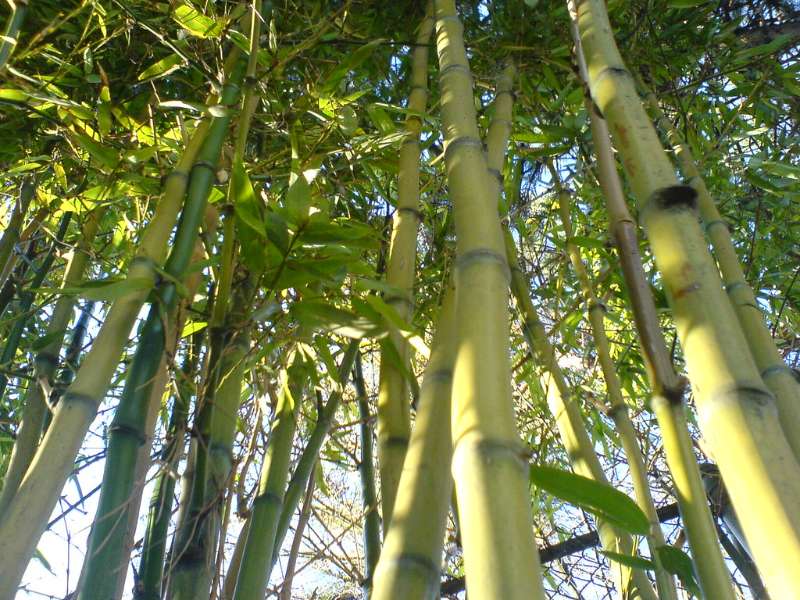
Running Bamboo Plants
Running bamboo is the type that grows quickly and spreads aggressively. Be careful if you decide to grow it, as it can easily take over a garden. Here are a few popular varieties:
- Golden Groove Bamboo (Phyllostachys Aureosulcata): This evergreen bamboo grows in straight canes with golden grooves, making it a striking addition to your garden. It can grow 3-5 feet every year, but because it’s a running bamboo, it’s better suited for larger outdoor spaces.
- Kuma Bamboo (Sasa Veitchii): Known as “dwarf bamboo,” this variety stays low to the ground, growing up to just 5 feet. It’s perfect for low hedges and adds beautiful foliage in the winter. However, be cautious if you plant it outdoors, as it can spread quickly.
- Red Margin Bamboo (Phyllostachys Rubromarginata): This tall bamboo can reach heights of up to 60 feet, and it grows incredibly fast. It’s perfect for creating natural walls and privacy screens in outdoor spaces. Plus, it’s hardy in cold climates.
Clumping Bamboo Plants
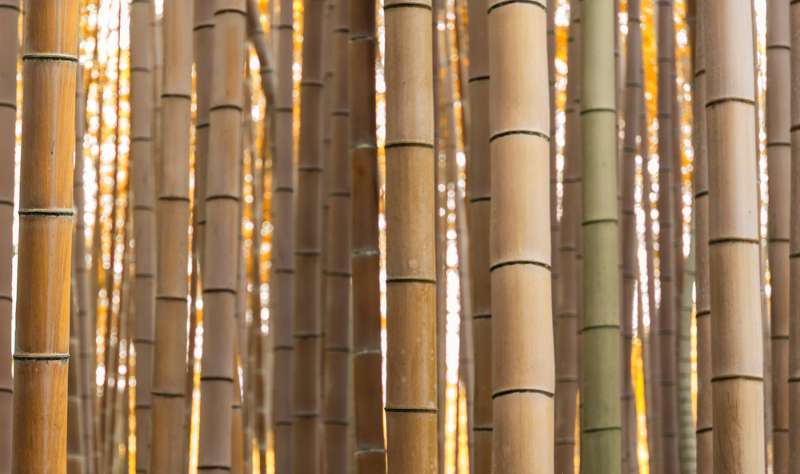
Clumping bamboo grows in tight clusters, making it perfect for indoor spaces and gardens where you want to avoid spreading issues. Here are a few popular varieties:
- Hedge Bamboo (Bambusa Multiplex): This type of bamboo is perfect for creating a privacy screen or hedge. It can grow up to 35 feet tall and is sun-resistant, making it ideal for outdoor garden fences or ornamental uses.
- Umbrella Bamboo (Fargesia Murielae): Known for its beauty, this bamboo forms a large, overhanging canopy and has a subtle hint of light blue in its young stems. It thrives best in shaded areas and doesn’t spread, making it a great addition to your garden.
- Giant Japanese Timber (Phyllostachys Bambusoides): This bamboo is commonly used for construction and makes up around 60% of bamboo harvested in Japan. It’s ideal for temperate climates and grows long, straight canes perfect for various uses.
Best Indoor Bamboo Plants
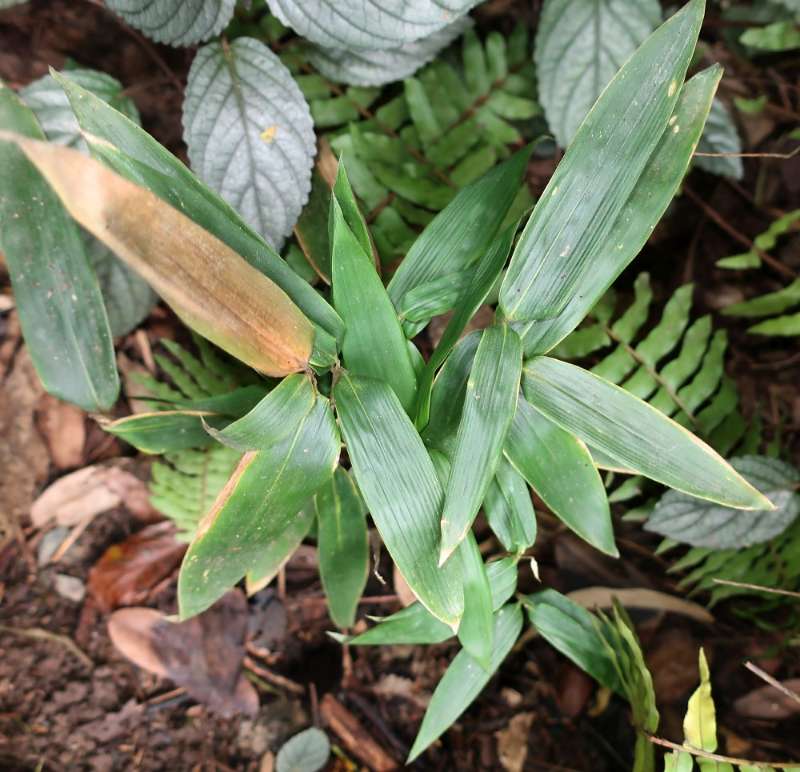
For indoor growing, you’ll want to stick with clumping bamboo varieties. These are easier to control and make beautiful houseplants. Here are some excellent choices for indoor bamboo:
- Large Leaved Bamboo (Indocalamus Tessellatus): This hardy bamboo thrives in indoor conditions with plenty of shade and moist soil. It’s easy to maintain and retains its green color year-round.
- Black Bamboo (Phyllostachys Nigra): Known for its striking dark-colored stems, this bamboo is a great indoor choice. While it can spread quickly outdoors, it’s easier to manage in containers and can grow up to 30 feet in ideal conditions.
- Lucky Bamboo (Dracaena Sanderiana): Often sold as “lucky bamboo,” this plant isn’t technically bamboo at all, but it’s a popular choice for indoor spaces. It thrives in water, making it an excellent low-maintenance option. According to feng shui, it’s believed to bring good luck and balance to your home.
How to Grow Bamboo Indoors
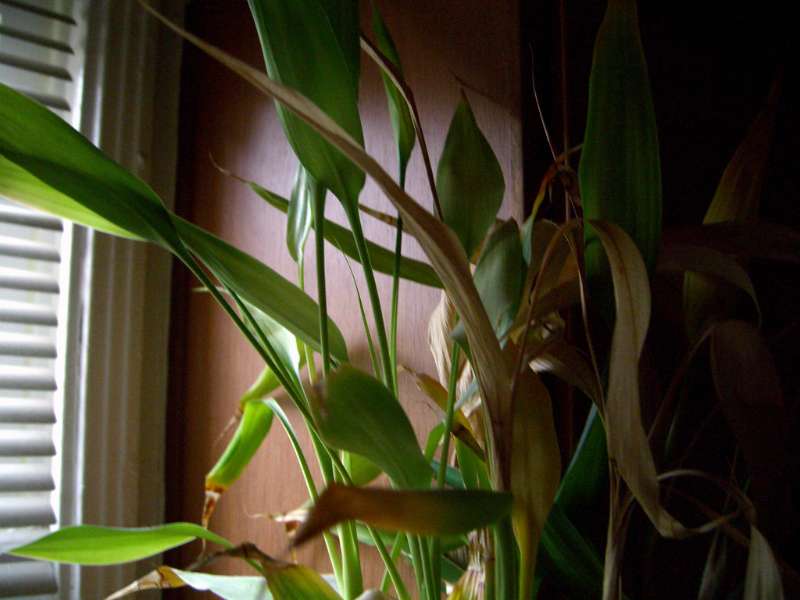
Once you’ve chosen your indoor bamboo plant, it’s time to learn how to grow it properly. While bamboo isn’t very demanding, you’ll want to make sure it’s well cared for, especially since you’re growing it outside its natural habitat.
Step 1: Pot It Right
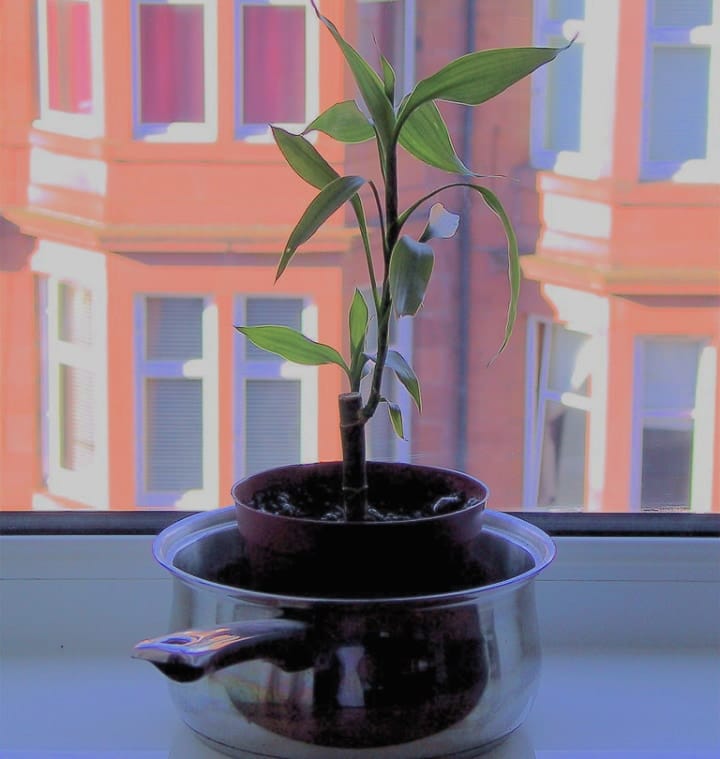
Start by placing your bamboo in a pot with a mix of soil and gravel. Put the pot in a tray of shallow water to help maintain humidity levels. For bamboo that grows in water, you can place it in a small dish or glass vase instead.
Step 2: Avoid Overwatering
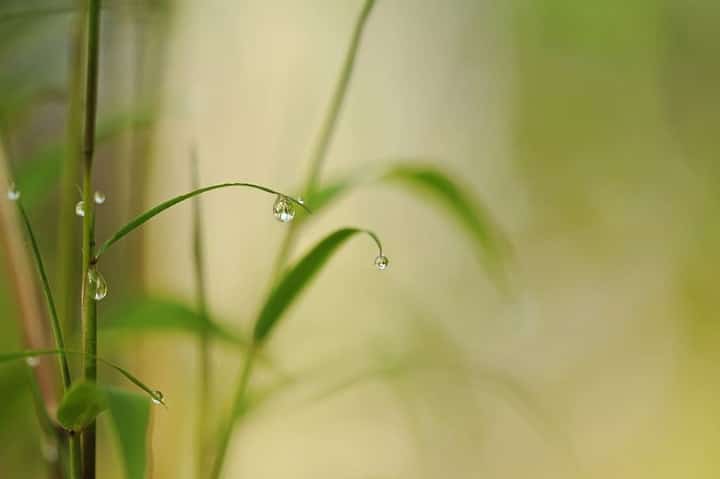
Bamboo doesn’t need excessive water, so be careful not to overwater. If you notice yellow tips on the leaves, it could be a sign of overwatering. Make sure the plant has enough air circulation, as this helps prevent rot.
Step 3: Mist It Occasionally
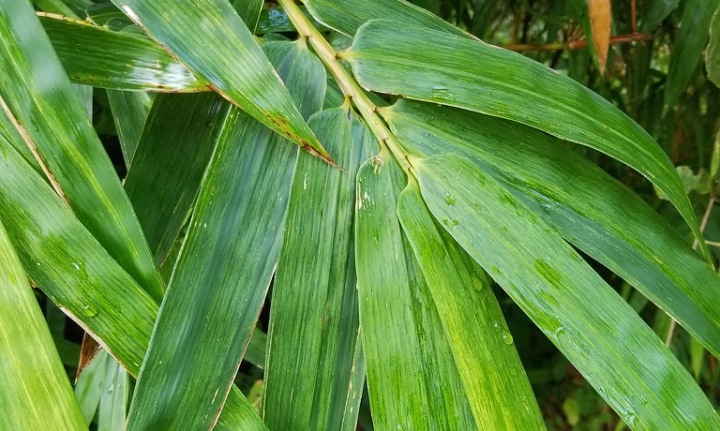
Bamboo prefers humidity, so giving the leaves a light misting now and then can help keep the plant healthy, especially if you’re in a dry climate.
Step 4: Don’t Forget to Fertilize
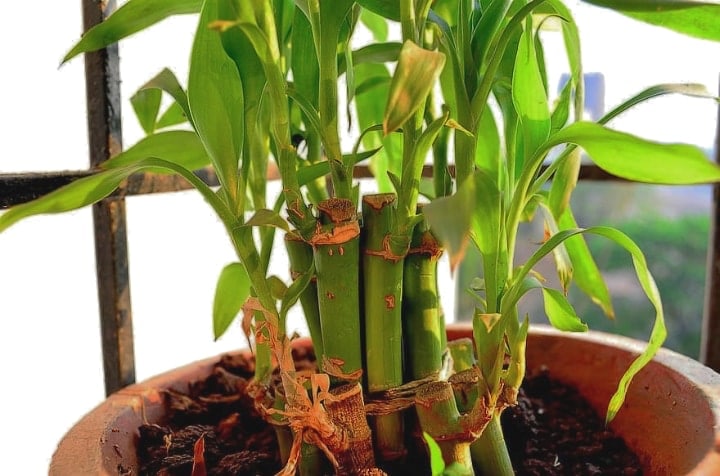
Bamboo needs occasional feeding to stay healthy. If you start to notice yellowing leaves, it might be time to add some fertilizer. Use a balanced fertilizer or one with higher potassium to help your bamboo thrive.
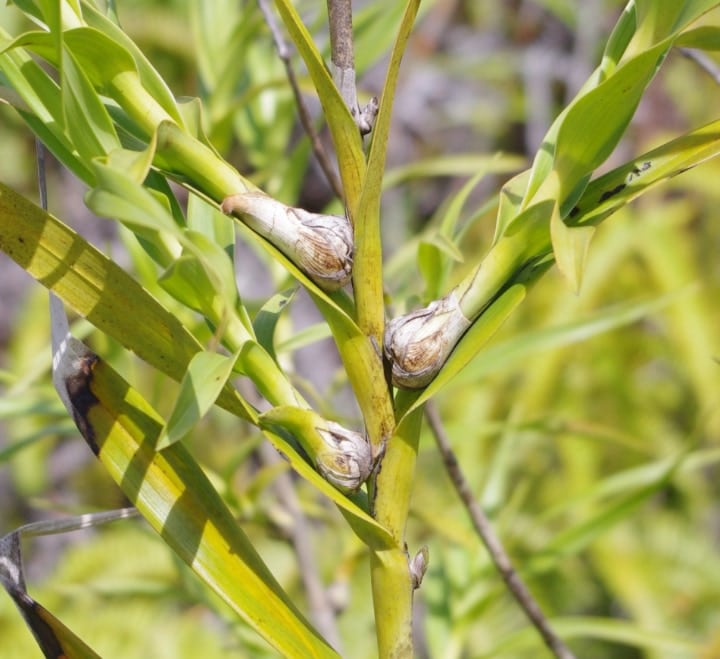
Step 5: Move It Outside If Needed
If you’re growing bamboo indoors, it’s important to remember that bamboo naturally thrives outdoors. If possible, move your bamboo plant outside during the warmer months for a bit of fresh air and sunlight.
Bamboo Care Tips
Bamboo is relatively easy to care for, but there are a few important things to keep in mind:
- Soil: Bamboo prefers well-drained soil. If you’re growing it in a pot, make sure the soil allows water to drain easily.
- Light: Bamboo loves light, but be mindful of direct sunlight, especially if the plant is indoors. Too much direct light can scorch the leaves.
- Temperature: Bamboo thrives in temperatures between 60-70°F (16-21°C). Make sure it’s not exposed to cold drafts, as bamboo plants are sensitive to temperature fluctuations.
- Watering: While bamboo needs water, avoid letting it sit in soggy soil. Keep the soil moist but well-drained, and for plants in water, make sure to change the water regularly.
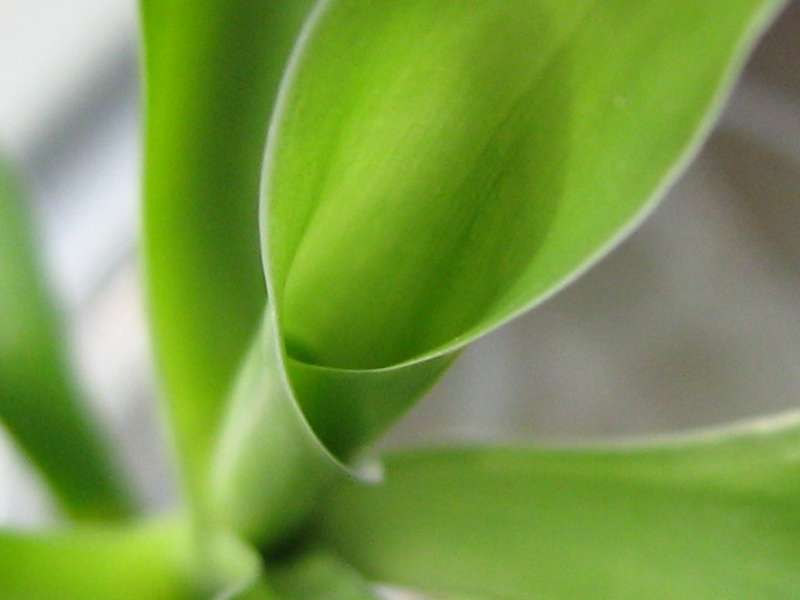
Bamboo is a fantastic, low-maintenance plant that can brighten up any space, whether indoors or outdoors. By choosing the right variety and following the simple care tips above, you’ll be able to grow a thriving bamboo plant in no time. Enjoy the beauty and tranquility that bamboo brings to your home!
FAQs:
- Can I grow bamboo indoors?
Yes, you can grow bamboo indoors, but it’s important to choose clumping bamboo varieties as they are more manageable and don’t spread aggressively like running bamboo. - How often should I water my bamboo plant?
Bamboo prefers moist soil but not overwatering. Water it regularly to keep the soil slightly moist but not soggy. If it’s grown in water, make sure to change the water regularly. - Can bamboo survive in low light conditions?
While bamboo prefers bright, indirect light, it can tolerate low light conditions for a while. However, the plant will grow best with a good amount of light. Avoid placing it in direct sunlight, especially indoors, as it can scorch the leaves. - Why are the leaves of my bamboo turning yellow?
Yellowing leaves could indicate overwatering, poor drainage, or lack of nutrients. Ensure you’re not overwatering and use a balanced fertilizer if needed. - Can bamboo be used outdoors?
Yes, bamboo thrives outdoors, especially running bamboo varieties like Golden Groove or Red Margin, which can form dense screens and hedges. However, it’s important to control the spread of running bamboo using barriers to prevent it from becoming invasive. - Is bamboo hard to maintain?
Bamboo is relatively easy to care for, requiring only moderate watering, occasional fertilizing, and proper lighting. With the right conditions, it is a hassle-free plant that will thrive for years. - Can I grow bamboo in pots?
Yes, bamboo can grow in pots. Ensure the pot has proper drainage and choose a bamboo variety that suits container growth. Clumping bamboo varieties are ideal for pots, as they don’t spread aggressively.
Conclusion:
Bamboo is a versatile and low-maintenance plant that can bring tranquility and beauty to both indoor and outdoor spaces. Whether you’re looking for a fast-growing privacy screen in your garden or a decorative houseplant to enhance your living room, bamboo offers a wide range of varieties suited for different needs. By selecting the appropriate bamboo type, such as the controlled-growing clumping bamboo for indoors or the robust running bamboo for large outdoor areas, you can easily enjoy its benefits.
By following the simple care tips like providing adequate water, ensuring proper lighting, and maintaining the right temperature, your bamboo plant will thrive. With the right attention to its needs, bamboo can become a stunning and lasting addition to your home, bringing an element of serenity and nature to any environment.
